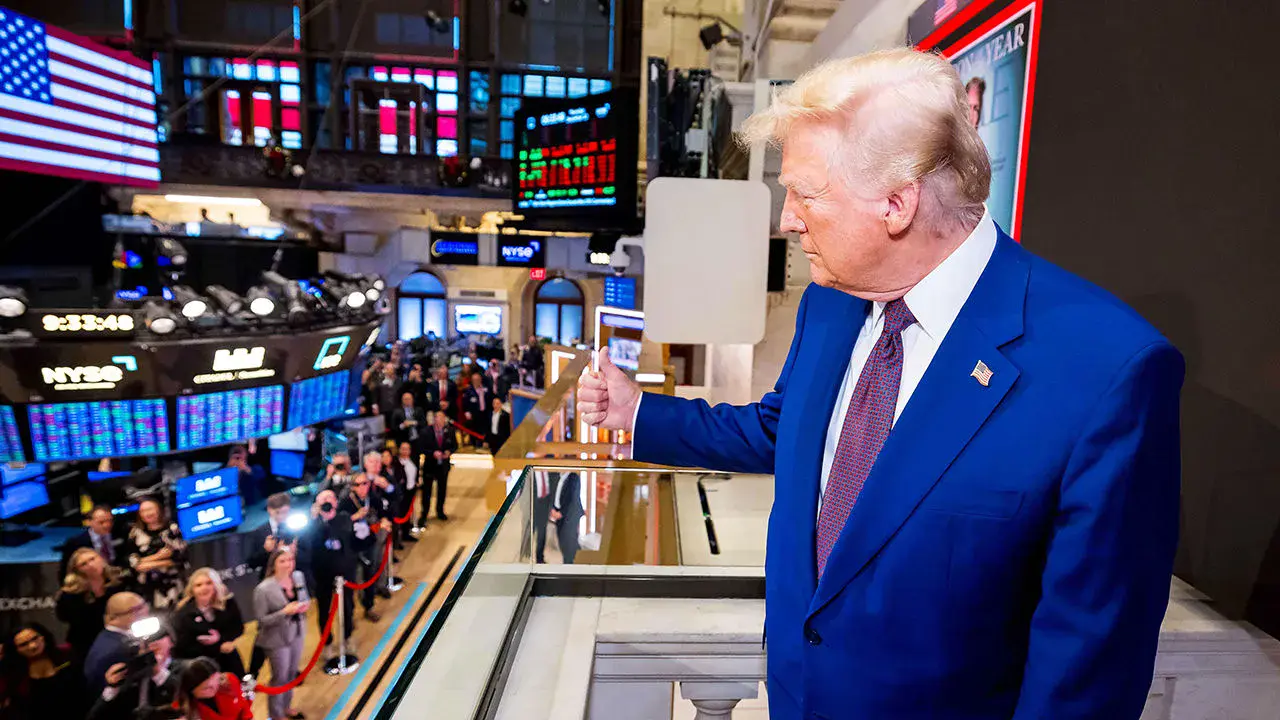
Decoding the Downturn: An Analysis of the US Stock Market Fall
Introduction: The Pulse of the Economy
The US stock market serves as a vital indicator of economic health and investor sentiment. Recent volatility, marked by staggering losses, has sent shockwaves through financial circles. From the Trump administration’s policies to the rise of AI-driven disruptions, the market’s fluctuations reflect a complex interplay of domestic and global forces. Understanding these dynamics is crucial for investors, policymakers, and economists seeking to navigate the uncertainties of the financial landscape.
The Trump Era: A Double-Edged Sword
The presidency of Donald Trump was a period of significant market volatility, characterized by bold policies that sparked both optimism and anxiety. One of the most contentious issues was the imposition of new tariffs. While these measures aimed to protect domestic industries and renegotiate trade deals, they often had unintended consequences. Investors grew wary of potential economic downturns stemming from trade wars, leading to abrupt sell-offs. A notable instance saw the market shed $4 trillion in value following tariff announcements, underscoring the market’s sensitivity to trade policy shifts.
Beyond trade, personnel decisions within the administration also contributed to market unease. The firing of a top statistician over a jobs report dispute, for example, sparked controversy and coincided with a $1.1 trillion loss in the US stock market. Such actions raised questions about the credibility and independence of government data, further eroding investor confidence. The market’s reaction to these events highlights the delicate balance between policy decisions and financial stability.
The DeepSeek AI App: A Tech Sector Wake-Up Call
The emergence of China’s DeepSeek AI app serves as a stark reminder of the tech sector’s vulnerability to disruptive innovations and geopolitical tensions. The app’s perceived threat to established US tech giants triggered a panic-driven sell-off, wiping out over $1 trillion in market capitalization. This event underscores the interconnectedness of global markets and the need for robust regulatory frameworks to manage technological disruptions.
The market’s reaction to the DeepSeek AI app also highlights the importance of innovation and competition. As artificial intelligence continues to advance, companies and governments must navigate the challenges and opportunities it presents responsibly. Failure to do so could lead to market disruptions and unfair competition, further destabilizing the financial landscape.
The Magnificent Seven: A Double-Edged Sword
The “Magnificent Seven” – Apple, Microsoft, Amazon, Alphabet (Google), Nvidia, Tesla, and Meta (Facebook) – have become dominant forces in the US stock market. These companies account for a substantial portion of the market’s total value, making their performance critical to overall market health. However, this concentration also poses risks. A sell-off in these large-cap stocks can have a disproportionate impact on the broader market, as seen in a trading session where the Magnificent Seven alone accounted for over $750 billion of a $1.1 trillion loss.
The market’s reliance on a few key players underscores the need for diversification and risk management. Investors should be cautious of overconcentration in any single sector or company, as market disruptions can have far-reaching consequences.
Macroeconomic Factors: The Invisible Hand
Broader macroeconomic factors and external shocks also play a significant role in stock market declines. Interest rate hikes, inflation concerns, and geopolitical instability can create uncertainty and volatility. For instance, the Federal Reserve’s decisions regarding interest rates can influence investor sentiment and borrowing costs, affecting stock valuations.
Significant external shocks, such as the COVID-19 pandemic, can also disrupt market stability. However, data over the past few years shows resilience in portfolio flows since the reforms of March 2024, highlighting the importance of sound economic policies and regulatory frameworks in mitigating the impact of unforeseen events.
Investor Sentiment: The Emotional Rollercoaster
Investor sentiment and market psychology are crucial drivers of stock market movements. Fear, greed, and herd behavior can amplify market swings, leading to both booms and busts. During periods of uncertainty or market decline, investors may panic and sell off their holdings, further exacerbating the downward trend. Conversely, during periods of optimism, investors may become overly enthusiastic and drive stock prices to unsustainable levels.
Understanding investor sentiment is essential for navigating market volatility. Investors should avoid emotional reactions and instead rely on sound analysis and long-term strategies. Diversification, risk management, and a disciplined approach to investing can help mitigate risk and achieve long-term financial goals.
The Bitcoin Factor: A New Dynamic
While not directly related to the traditional stock market, the rise of Bitcoin and other cryptocurrencies has introduced a new dynamic to the financial landscape. The increasing popularity and acceptance of Bitcoin as an alternative asset class has the potential to influence investor behavior and capital flows. Further research on Bitcoin policy and its macroeconomic implications is needed to fully understand its potential impact on the stock market and broader economy.
Conclusion: Charting a Course Through Uncertainty
The US stock market’s recent falls, marked by trillions of dollars in value erosion, underscore the complex and interconnected nature of the global financial system. Factors ranging from trade policies and personnel decisions to technological disruptions and macroeconomic trends can all contribute to market volatility.
As investors navigate these uncertainties, it is crucial to maintain a long-term perspective, diversify their portfolios, and avoid making impulsive decisions based on short-term market fluctuations. Understanding the underlying drivers of market movements and adopting a disciplined approach to investing can help mitigate risk and achieve long-term financial goals.
By carefully analyzing the factors that contribute to market downturns and remaining informed about the evolving economic landscape, investors can navigate the uncertainties and capitalize on opportunities in the ever-changing world of finance. The key lies in balancing caution with optimism, ensuring a resilient and adaptive approach to the financial markets.





